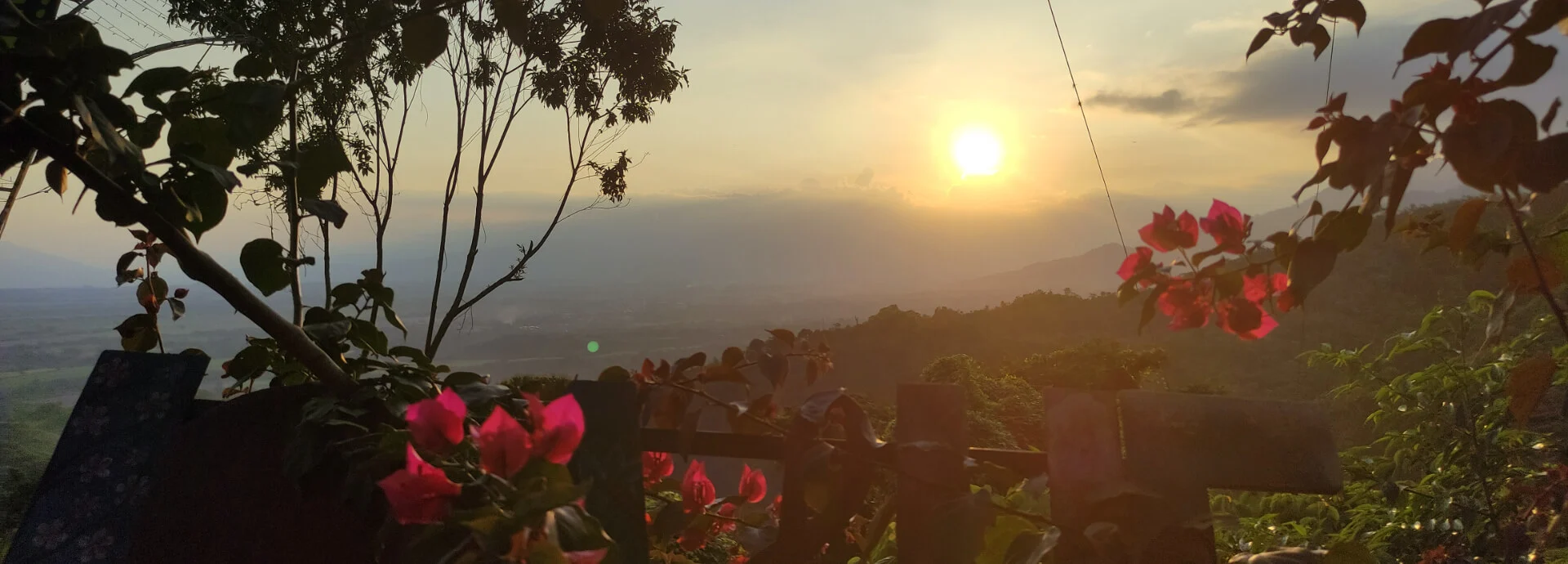
Colombia is a land of contrasts, a place where snow-capped mountains meet tropical beaches, and lush rainforests thrive alongside arid deserts. This incredible diversity means there’s no single best or worst month to visit – it all depends on what you’re looking for.
Do you want to spend as much time as possible outside? Maybe look for specific animals? Visit an iconic event like the Carnival of Barranquilla? Or are you more focused on finding the best deals and stretching your travel budget?
Here’s your 2025 Colombia trip planner! Below, we’ll break down Colombia’s seasons, weather patterns, and regional variations, so you can pinpoint the perfect month for your Colombian adventure.
Contents
Due to the country’s proximity to the equator and its unique topography, characterized by extreme altitude differences, the temperature in Colombia is determined more by where you travel than by when you travel.
The weather in coastal areas, like Santa Marta, is very different from the weather in Bogotá which is located at over 2,600 meters (8,500 feet) height. As a general rule of thumb, temperatures along the coast tend to be warm to hot year-round, while areas above 2,000 meters (6,500 feet) experience spring- or autumn-like conditions during the day and chilly temperatures at night.
Colombia features different climate zones, meaning you can easily “change the weather” if you don’t like it in one place. Here’s a simplified overview of important climate zones in Colombia:
In most regions of Colombia, rainy season lasts roughly from April to November, with a break between June and September, and dry season lasts approximately from December to March. The drier months are considered the best time to visit the Andean region of Colombia. However, even during rainy season, it usually doesn’t rain all day!
In the Amazon region, June to November are usually drier than December to May.
That being said, consider that climate change is noticeable in Colombia, too. So, these weather rules of thumb aren’t as reliable as they used to be and you should always be prepared for variations. Also, climate phenomena like “El Niño” and “La Niña” (when the waters of the central and eastern Pacific Ocean become warmer or cooler than usual) influence the amount of sun and rain.
However, compared to many other countries, Colombia basically welcomes travelers with favorable weather and climate throughout the year.
As weather and climate in Colombia vary much more in relation to altitude rather than time of the year, it’s important to check the conditions in the specific travel destinations you plan to visit during your trip. In our in-depth destination guides you will find recommendations regarding the best time to visit, for example for Bogotá, Medellín and Cartagena.
Here is a rough guide by region.
May, September, and October are the months with the fewest visitors in Colombia, marking the low season and offering the cheapest time to visit Colombia. However, prices in Colombia are generally very affordable, so no need to feel limited to those months.
As a solo traveler, consider that in low-season months it may be more difficult to find other travelers to team up with for tours and activities that require a group to take place, if you are not the hostel-type of traveler. You my want to join our Colombia Solo Travelers Facebook Group to search for other solo travelers near you that would like to tag along. (Our focus is on female solo traveler needs and interests.)
If you are concerned about prices and crowds, you should avoid visiting the top tourist destinations in Colombia during Christmas and Easter holidays, which are the main travel periods for Colombians and mark the high season. The Christmas holidays start around the 15th of December and last to the 15th of January approximately. The Easter holidays, known as “Semana Santa” in Colombia, occur in the week leading up to Easter Sunday.
Colombian school holidays are in June and July, which are also popular travel periods in Colombia. During these times, prices may increase in top travel destinations and tourist attractions may get crowded.
Colombia also has an incredible amount of bank holidays and Colombians love to get out of the city in these occasions. (Always check the calendar!)
Good news, if you can only travel in high season:
Here’s a quick guide what each month of the year offers you in Colombia.
The best time to travel to Colombia, in our opinion, is late January to early March and August to September. These months offer great conditions for outdoor adventures, wildlife spotting, and nature activities, typically featuring pleasant weather and budget-friendly prices.
The worst time to visit Colombia, if you are concerned about prices and crowds, is during the Colombian holiday seasons: Christmas holidays, Easter Holidays (Semana Santa), and Colombian school holidays (June, July). Also, avoid top tourist attractions during bank holidays (“puentes”).
However, in general, don’t worry: Compared to Europe or North America, Colombia offers a pleasant climate and affordable prices year-round. So, any month is a great time to visit. Have a wonderful time in Colombia!
Share your thoughts!
Questions or comments? We’d love to hear them! Reach out to us on Instagram, Facebook or TikTok.
Last Update: April 14, 2025
© 2025 Travelhapp.com
To provide the best experiences, we use technologies like cookies to store and/or access device information. Consenting to these technologies will allow us to process data such as browsing behavior or unique IDs on this site. Not consenting or withdrawing consent, may adversely affect certain features and functions. View our Privacy & Cookie Policy